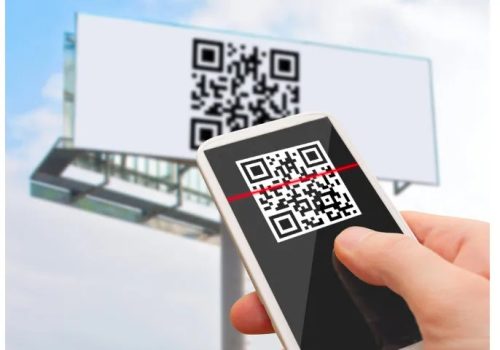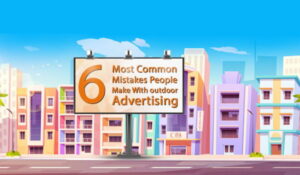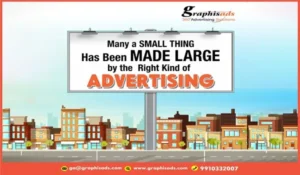In a world driven by digital-first behavior, static ads alone aren’t enough. Government campaigns, D2C brands, and service providers increasingly need instant bridges between outdoor visibility and online action.
That’s where QR codes come in.
Once dismissed as a gimmick, QR codes have evolved into a serious tool in the outdoor advertising arsenal, especially in high-footfall, hyper-mobile urban environments like Delhi NCR.
✅ What Makes QR Codes Effective on Hoardings?
1. Instant Action in a Fast-Paced World
QR codes thrive on one core advantage: speed. With a single scan, the viewer jumps from curiosity to conversion—whether that’s:
Visiting a landing page
Claiming a discount
Downloading an app
Watching a campaign video
Example: A food delivery service places a hoarding near a university in North Campus. The QR code offers a ₹50 off coupon for students. Instead of typing a URL or searching the brand, students simply scan and order—frictionless and fast.
2. Strategic Fit in High-Traffic Locations
In zones like Rajiv Chowk, Lajpat Nagar, and Karol Bagh, people often move slowly due to congestion or footfall. These are ideal settings for QR-enabled hoardings—because people have just enough dwell time to scan.
But execution matters.
To be effective, a QR code on a hoarding must be:
🔍 Large, bold, and high-contrast for easy scanning from 6–10 feet
📏 Placed at eye level or slightly above for pedestrian visibility
💬 Backed by a compelling CTA like “Scan & Win,” “Know More,” or “Get Directions”
Without these design cues, even a well-placed QR code can be ignored.
3. Data-Driven Tracking and Real-Time Insights
This is where QR codes truly outshine traditional outdoor ads.
Every scan is trackable—meaning brands and government bodies can measure:
📊 How many users scanned
📍 From which location
⏰ At what time
🚀 What action they took afterward
This kind of granular data allows real-time campaign optimization. You can compare hoarding performance across neighborhoods, test creative variations, and make informed media buying decisions—all from a once-static medium.
💡 Are QR Codes on Hoardings Worth It?
Absolutely—if used intelligently.
In cities like Delhi, where outdoor space is saturated with visual noise, QR codes provide a clear call to engagement. They convert a passive glance into an active digital journey.
And most importantly—they don’t compete with digital. They complement it. A QR-enabled hoarding can direct users to your app, your form, or your video—extending the impact of a single creative beyond its physical limitations.
🔚 Final Word: The Offline-Online Bridge Is Here
QR codes on hoardings are no longer optional. They’re an essential connector in a multichannel marketing ecosystem.
When thoughtfully placed, designed for scanability, and backed by a valuable user payoff, they can transform an ordinary outdoor ad into a high-converting gateway—especially in public spaces packed with opportunity.
📘 FAQ: QR Codes in Outdoor Advertising
Q: Can people really scan QR codes while driving?
A: Not recommended for high-speed areas. Use QR in pedestrian zones, slow-traffic signals, or transit stops for better safety and effectiveness.
Q: How do I know if my QR code campaign is working?
A: Use trackable URLs (via Bitly, Google UTM, etc.) to monitor scans, time stamps, and follow-through actions like purchases or signups.
Q: Is Delhi the right market for QR-enabled hoardings?
A: Yes. Delhi has dense smartphone penetration, mobile-first behavior, and urban layouts that support slow or paused movement—making it ideal for QR-based interactions.




